
IF YOU REACHED THIS PAGE VIA A SEARCH ENGINE
THIS WILL TAKE YOU TO OUR HOME PAGEOR
THIS WILL TAKE YOU TO THE SHOP TOOLS INDEX PAGE
Tools for the Amateur Riflesmith
Page 2
Let me say up-front, I don't have any battery powered measuring instruments. They are nice, and have some features that help to prevent errors, but I like to feel independent of the batteries.

You can't do any good work without some quality control and one quality measurement often needed is distance. Above can be seen a 6-inch dial caliper, on sale at Wholesale for $10. "6-inch" means the jaws will open to measure to 6 inches, and this one, as do most, will resolve to 0.001 inches. These are "three-way" measuring.
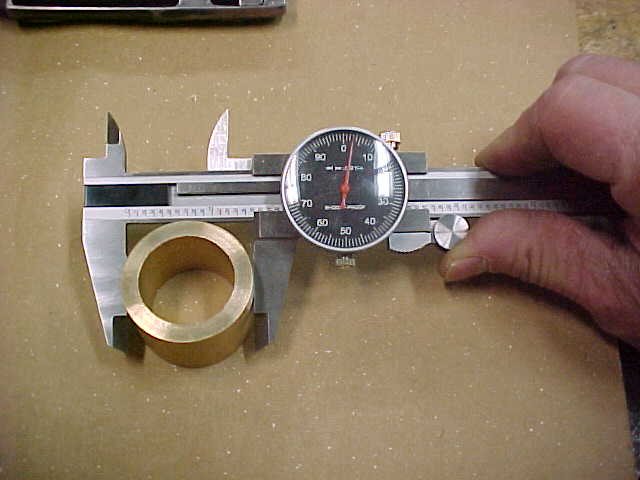
The outside of an object can be measured.
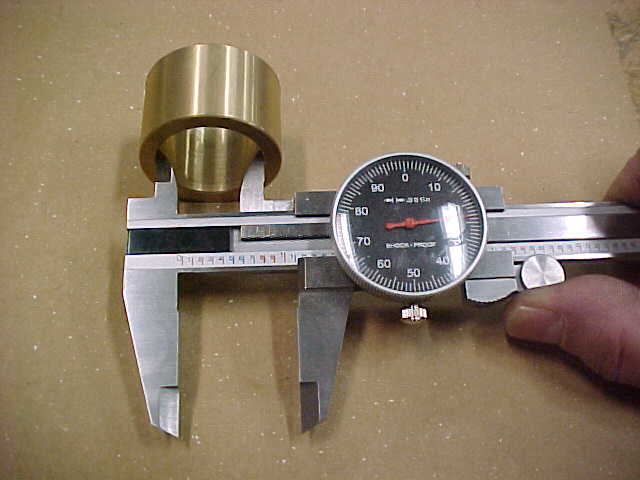
The inside.
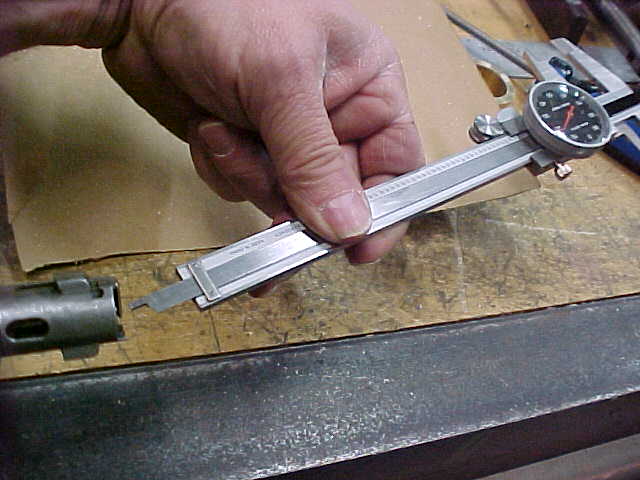
And depth, as in the case of firing pin protrusion.
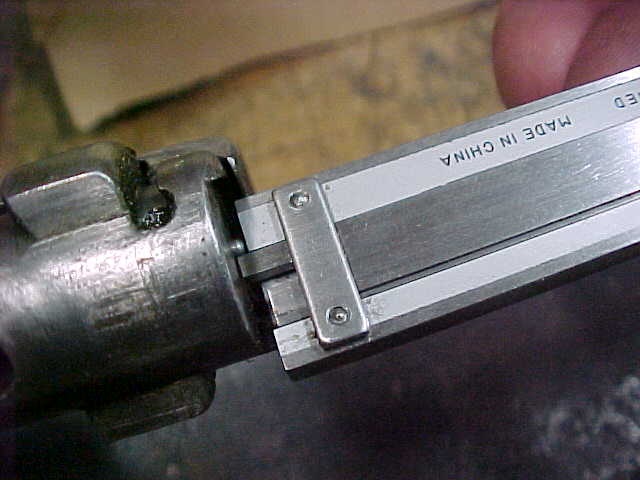
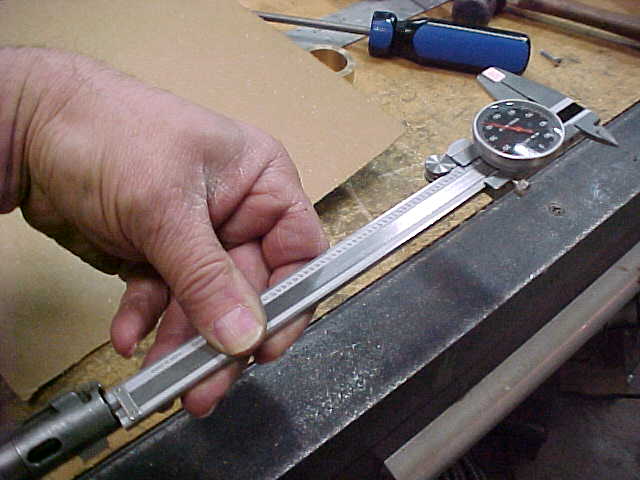
So, "three-way, outside, inside and depth.
The 6- inch calipers are the most often needed, however a 12-inch set is nice, but not for every day use. I keep a 12-inch for those jobs where the 6-inch won't do, but thatís only about twice a year.
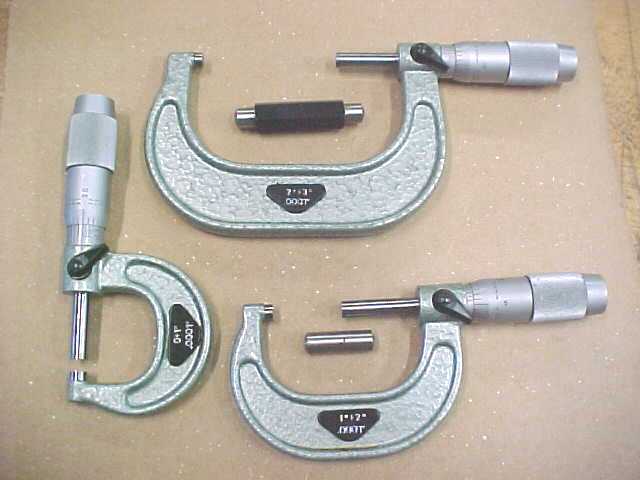
For more accurate measurements, micrometers are used. IN GENERAL, a micrometer has a range of measurement of one inch. So a "1-Inch" micrometer can measure from 0 to 1 inch, and a "3-Inch" micrometer measures from 2 to 3 inches. Shown above are 1-Inch, 2-Inch and 3-Inch micrometers. Micrometers 2-inch and above should come with "setting standards". These can be seen above, a 1-inch standard for the 2-Inch micrometer and a 2-inch for the 3-Inch micrometer. Standards 2-inches and above commonly have insulated sleeves so that heat from the fingers won't cause undue elongation of the standard. A 1-inch micrometer is about $10, and the three-piece set shown above is about $35.
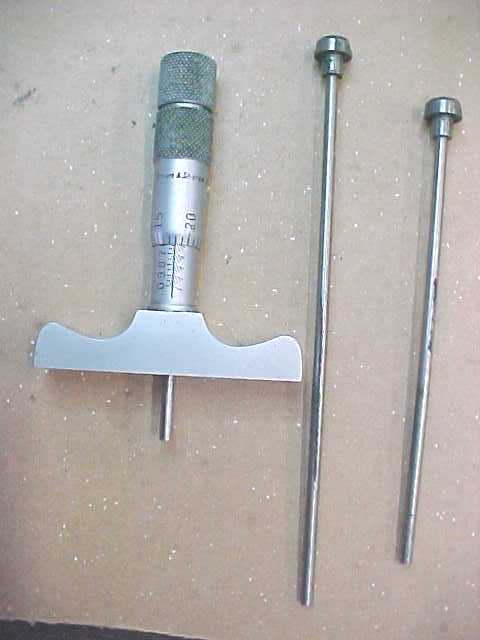
Another kind of micrometer is used to measure depth, and is called a depth micrometer, of all things. This one comes with two additional "rods" allowing ranges of 0-1-inch, 1-2-inch and 2-3-inch. The 0-1-inch rod is installed. This would commonly be used for headspacing a new barrel. The one shown is a VERY OLD Brown&Sharpe, a Chinese or Eastern European one is about $60.
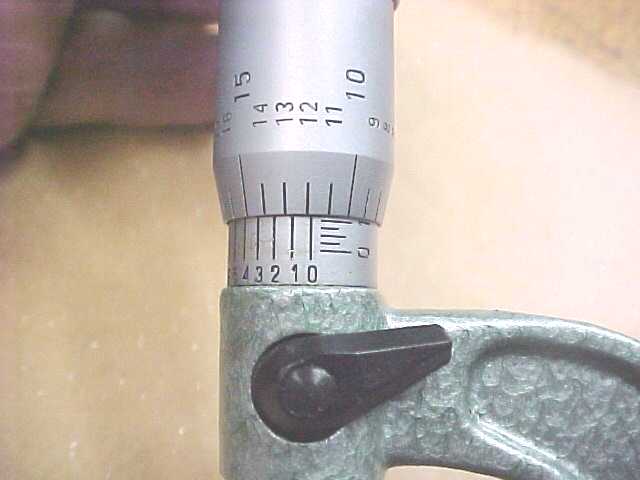
Most micrometers are capable of resolving a measurement to 0.0001-inch. This reading involves using the scale shown above as a vernier.
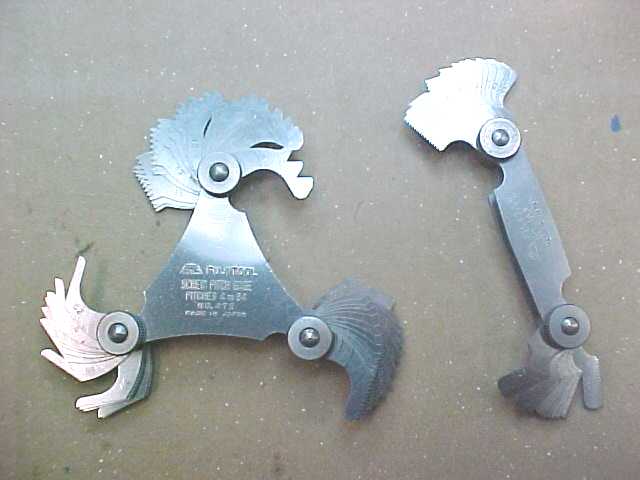
Along with measuring stuff, it is often necessary to determine the thread pitch of screws and/or nuts. The most common instrument is the thread gauge. Two are shown above. The have little foot-shaped blades with 60 degree notches cut on one side. These notches are compared with the unknown threads and when a match is found, the pitch is determined. The thin shape of the blades allows for insertion into nuts and threaded holes. These can also be used to measure the spacing of engraved lines in metal or wood. They come in "inch" and "metric" versions.

Squares are used to determine the accuracy of two flat surfaces intersecting at 90 degrees. The one shown to the left is adjustable and the one to the right is fixed.

A popular square is the "12-inch combination" set seen above. This consists of a 12-inch rule and three sliding "heads". One head is fixed at 90 degrees and 45 degrees, seen at the right, one head is adjustable to any angle, seen to the left, and one head is used to determine the center of a round object.
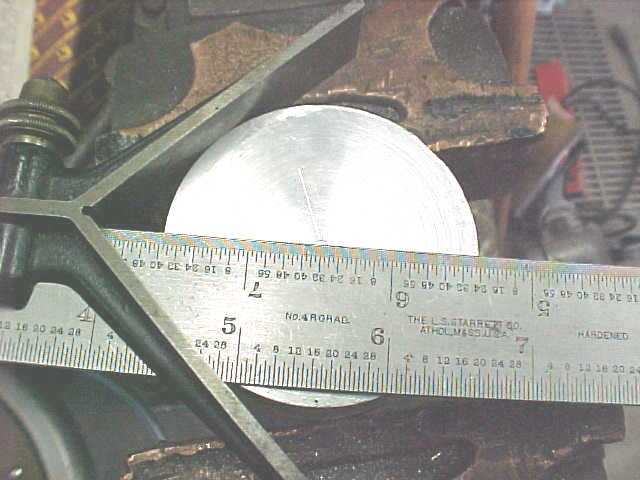
Here is the center-finder head in use. The head is placed securely against the side of a round, and a line is drawn, then the head is rotated and a second line is drawn. The two lines will intersect at the center of the round.
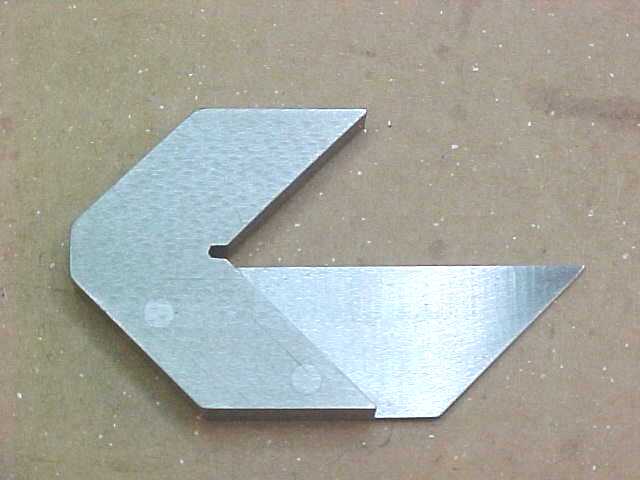
Here is another center square, shown from the bottom.